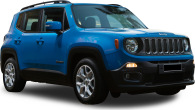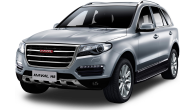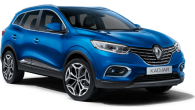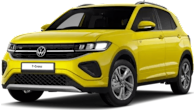Innovation is hard, but convincing people they should buy a smaller engine is sometimes harder.
That’s why, when Ford launched its Everest range for 2019, it stopped short of pulling the larger 3.2-litre five-cylinder diesel from the range. It is still offered on the base grade Ambiente, and the middle-grade Trend we’re testing here.
But our car is fitted with the new 2.0-litre twin-turbo diesel and 10-speed automatic that has become the source of many an angry internet comment.
So, are the angry internet commenters, right? Should ford have stuck with the bigger engine? Will it even make a difference to the way the SUV feels day-to-day in the confines of the suburbs, where most of them will spend the majority of their lives?
Read on angry internet commenter, and we’ll find out together.
To preface this test, I used the car in the context of a daily driver: for the 9-5 work commute, weekend freeway driving, and grocery runs. If you want to read about the Everest’s full range of abilities off-road, you should check out our adventure hub or Marcus Craft’s initial range review.
Ford Everest 2019: Trend (4Wd 7 Seat)
| Engine Type | Diesel Twin Turbo 4, 2.0L |
|---|---|
| Fuel Type | Diesel |
| Fuel Efficiency | 7.1L/100km (combined) |
| Seating | 7 |
| Price From | $31,240 - $37,620 |
| Safety Rating |
|
Does it represent good value for the price? What features does it come with?
8 / 10
If you’re looking for an affordable commuter SUV, best look elsewhere. In fact, even among the list of tough, capable body-on-frame SUVs, the Everest is relatively expensive.
Our Trend 4x4 comes in at a total of $61,190. Pricey, considering it’s far more expensive than top-spec versions of the Isuzu MU-X (LS-T $56,200), Holden Trailblazer (Z71, $53,490) and Mitsubishi Pajero Sport (Exceed, $54,200).
Thankfully, to justify that hefty price discrepancy, the Trend comes very well equipped out of the box.
Across the entire Everest range standard items include keyless entry, push-button start, a partially digital dash, as well as an 8.0-inch touchscreen generously supporting built-in sat-nav, Apple CarPlay and Android Auto, DAB+ digital radio, a 10-speaker audio system and a reversing camera.
.jpg)
All Everests get 18-inch alloy wheels, and the four-cylinder versions get start-stop as standard.
Already not a bad offering compared to competitors, our Trend grade adds to that list HID headlamps, LED DRLs, powered tailgate with hands-free opening, auto high-beams, rain-sensing wipers, powered and heated wing mirrors, ‘leather-accented’ seat trim, eight-way power adjustable driver's seat as well as an improved safety suite (more on that later) and extra interior and exterior trim upgrades.
Sounds good? It should. Aside from the omission of full-LED lighting (Pajero Sport, MU-X) and the truly unnecessary luxury of heated seats (Pajero Sport), the Everest Trend is far better equipped than all its competitors.
.jpg)
It's worth also considering that the Titanium spec level that sits above the Trend adds mainly luxury and trim items but becomes a victim to luxury car tax, pushing the price to $73,990. It truly makes our Trend 4x4 the pick of the range at $61,190.
Is there anything interesting about its design?
8 / 10
The Everest is a tough looking beast, without managing to look controversially ugly.
The front three-quarter shares a lot of the rough-going appeal of the Ranger, with the high-riding chrome-accented grille, grey-highlighted front-bar, two-tone alloys, and the Everest manages to off-set much of its curvy SUV profile with some rugged looking square bits bulging out.
.jpg)
Around the back things look a little less resolved, with the tailgate riding a bit too high for it to look as slick as non-body-on-frame SUVs, and the whole back area looks a bit rotund.
This likely has less to do with Ford’s styling department and more to do with the reality of maintaining a semblance of practicality in the boot with all seven seats deployed. Still, at least it isn’t as divisive as the Pajero Sport, for example…
.jpg)
The ‘Blue Reflex’ paint on our test car adds $600 to the price. Only ‘Arctic White’ and ‘True Red’ come free of charge.
Inside is very good news indeed, where, at times, it’s easy to forget exactly how capable the Everest is. There are pleasant soft-touch surfaces adorning the cabin in all the right places, and even the harder plastics feel nicer under the touch compared to most vehicles in this segment.
.jpg)
Little details like the angle of the big, bright screen add to the ergonomics and comfort of the cabin, too. Despite its ladder chassis underpinnings, it feels far more like a traditional commuter SUV in terms of cabin ambience and feel.
On the downside, the centre stack that houses the volume and air-conditioning controls is one big lump of nasty plastic, and it’s not particularly nice to use. Why Ford perseveres with buttons and not dials for controlling fan speed and temperature is beyond me.
.jpg)
Oh, and true Ford nerds might be upset to know that the Everest has finally said goodbye to the Falcon shift-lever that was in the previous model.
How practical is the space inside?
8 / 10
The Everest’s cabin is, obviously, huge. But there are a few extra practicality touches to be aware of. Up front, there are two large cupholders down the centre, a decently sized (although not huge) console box, (small) bottle holders in the doors and a stowage trench in front of the shift lever and under the air-conditioning controls housing the USB ports suitable for phones, wallets and other tidbits. There’s a 12v port and a power-only USB port charging point also.
Room for front passengers feels excessive, although frustratingly there’s no telescopic adjust for the steering column.
.jpg)
The second-row scores bottle holders in the doors, two bottle holders in the drop-down armrest, a 12v port, a full-size AC 230v port as well as air-conditioning controls, allowing passengers to adjust the fan speed and temperature of their own floor and roof mounted air-vents.
Legroom is great, although headroom begins to become a problem for taller individuals courtesy of the high floor.
.jpg)
To my surprise, I actually fit snugly in the third row, with slightly cramped leg room but ample arm-flailing area. I’m 182cm tall, my head was touching the roof, and you would suffer back there on a 30+ degree day with the roof- and side-mounted air vents blowing asthmatically even on full blast.
.jpg)
There were neat little storage alcoves and nicely sized cupholders back there, however. Ford says the Everest has a total of 30 storage bins and alcoves, adding an extra 48 litres of storage.
.jpg)
Luggage space is the same as the previous Everest, at a gigantic 1050 litres with the third row down. This is despite the high boot floor. With the third row up, it’ll still provide 450 litres - which is bigger than even the largest hatchbacks. And with both rows stowed, it’ll provide an almost minivan-esque 2010 litres. Payload capacity is 687kg, so it would honestly be impressive if you managed to push any of those limits.
.jpg)
What are the key stats for the engine and transmission?
8 / 10
Our car was fitted with the controversial 2.0-litre four-cylinder bi-turbo diesel engine, mated to a 10-speed torque-converter auto. I was a big fan of the previous 3.2-litre inline five-cylinder engine, so how do they compare?
Well, the 2.0-litre somehow produces higher figures across the board, with 157kW/500Nm up from the five-cyl’s 143kW/470Nm. Although, it has a slightly narrower peak torque band between 1750-2000rpm down from 1750-2500rpm.
.jpg)
It also compares well (at least on paper) to competitors, most of which produce less than 140kW/450Nm, aside from the Trailblazer, which is nearly on par with 147kW/500Nm.
The new 10-speed auto is theoretically an improvement to the previous six-speed, and it's also used in the Mustang and Ranger. For how it feels in practice, skip down to the Driving section.
.jpg)
There is a also an electronic locking rear diff, hill-descent control and the 4x4 ‘Terrain Management’ system, but they weren't put to use on this on-road test. For those interested, the Everest has a max wading depth of 800mm and an impressive braked towing capacity of 3100kg, but on most models - including our Trend - it requires ticking the $1000 tow pack box.
How much fuel does it consume?
7 / 10
The new transmission and smaller engine have prompted Ford to lower its claimed/combined fuel figure to just 7.1L/100km. That’s far less than what most of its competitors claim, so it’s fairly bold.
Over my week of mostly suburban driving, including a few freeway stints, I landed on 11.0L/100km, which is a solid miss, even if you consider the increased the amount to time I spent in traffic. I also left the start-stop system on for most of the week, for all the good that did.
All Everests have an 80-litre fuel tank and take AdBlue for 'Selective Catalytic Reduction'.
What's it like to drive?
8 / 10
For all the negativity, the 2.0-litre bi-turbo is not a bad unit at all. If anything, it’s the 10-speed transmission that lets the whole drive experience down.
Power delivery from down low is reasonably instantaneous, and surprisingly linear under acceleration. It’s also impressively quiet for a body-on-frame, except toward the top end of the rev range.
I never felt myself wanting for power at any time, although I wasn’t pushing it with a particularly high load or doing any towing. Needless to say, it wasn’t phased at all with five people aboard.
That having been said, I was expecting more from the 10-speed automatic. It had a tendency to be slow to react to sudden changes to my application of the accelerator pedal, and became especially clumsy through corners, spending a second fumbling for the right ratio. It’s a bit of a shame given the old six-speed five-cylinder combination played so nicely together.
Considering how high the Everest’s centre of gravity is, it felt controlled through the corners, with less of the tilting I might have expected from a car this tall, and Ford has done a fantastic job of making the steering light, but not taking the feel out of it.
Obviously, the off-road-focused suspension was not bothered by anything the suburbs could throw at it, but for what it's worth the jiggly ladder-chassis feel that some ute-based SUVs are plagued with was minimal. It’s a suburb-friendly package, if a little overkill for most people unlikely to explore its abilities.
Warranty & Safety Rating
What safety equipment is fitted? What safety rating?
9 / 10
The Everest maintains its maximum five-star ANCAP safety rating awarded in 2015, but does add some new active safety kit, particularly on the Trend.
Now standard from Trend up is pre-collision assist, 'Autonomous Emergency Braking’ (AEB), 'Traffic Sign Recognition' (TSR), active cruise control, and ‘Lane Keep Assist’ (LKAS).
.jpg)
Missing is 'Blind-Spot Monitoring' (BSM) and ‘Rear Cross Traffic Alert’ (RCTA) as well as the arguably unnecessary ‘Active Park Assist’ (a semi-autonomous parking system), all of which arrive standard on the Titanium.
It’s a more comprehensive suite than is available on competitors like the Trailblazer, MU-X, Prado, and even the Pajero Sport which has AEB but not LKAS. It helps to justify the Everest Trend’s asking price.
Passive items include seven airbags (which even explicitly cover the third row), ISOFIX mounts on the outer middle row, trailer sway control and the standard suite of stability systems.
What does it cost to own? What warranty is offered?
8 / 10
Ford has updated its warranty company-wide recently to five years unlimited kilometres, which is easily among the best in the segment given that Kia does not compete in the body-on-frame space.
Ford’s service calculator tells us that standard services will cost $360 or $555 every second year.
Verdict
The risks taken by Ford in making big changes to the Everest’s drivetrain may still divide some buyers, but the improvements the company has made to its safety and spec level make the Trend 4x4 our pick of the range.
It’s still relatively expensive, but as one of the most civilised and safe SUVs in the segment, it arguably justifies the price.
Does Ford's choice of pushing ahead with the 2.0-litre four-cylinder rule it out for you, or is the equipment more important? Tell us what you think in the comments below.
Pricing Guides






.jpg)


.jpg)
.jpg)
.jpg)









































 copy.png)













.jpg)
.jpg)




